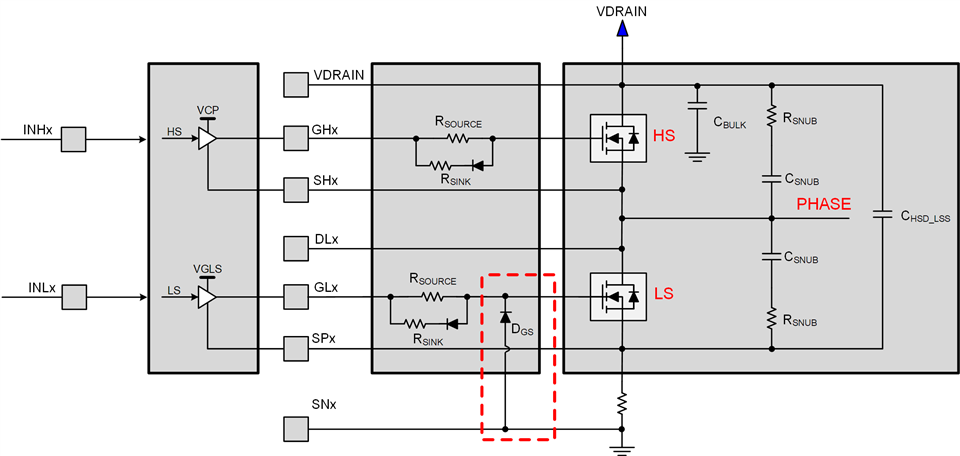Other Parts Discussed in Thread: TMS320F28069,
Hello,
I am working with a motor control custom board that includes a DRV8353 driver and a TMS320F28069 microcontroller. We are using instaspin library to control the PMSM motor.
The board normally works ok, but sometimes the drive break specially when high Idrive values in the driver configuration are used. We have plot the voltage at the mosfet gates and we have seen something quite strange. The following picture shows the voltage at GHA pin (yellow) and GLA pin (blue). As you can seen the voltage at GHA pin starts to decline from 34V (please, notice that signal are refered to GND), but it doesn't fall to 0V. When the Low side mosfet is triggered, the higw side gate volltage fall to 0V, but an oscillanting transitory signal is seen (negative voltage are also observed)
Figure 1:

We have also seen that this transitions do not present the same pattern always. The following figure shows the same measurement, but in this case the voltage at GHA seems to be correctly performed
Figure 2

Figure 1 happens when DRV switches off the High side mosfet while one of the other high side mosfet is switched on.
Figure 2 happens when DRV switches off the high side mosfet and no other high side mosfet is switched on
We have tested with various Idrive configurations. With low Idrive values the spikes nearly dissapears, but the GHA voltage is not always drive to 0 before the low side is switched on (as in the first image).
Do you have any advice?
Thank you in advance


